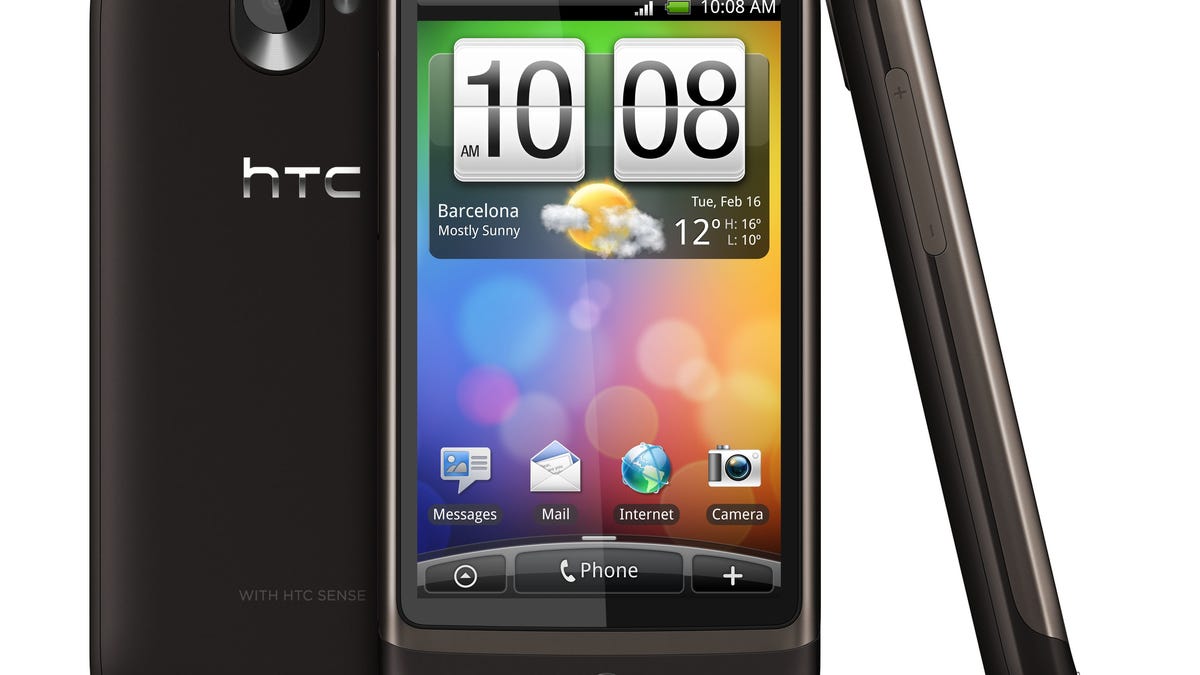HTC's triple threat: Legend, Desire, and HD Mini
HTC introduces three new smartphones at Mobile World Congress 2010, the Android-based HTC Legend and Desire and the Windows Mobile-based HTC HD Mini.

BARCELONA, Spain--On Tuesday, HTC announced three new smartphones at Mobile World Congress 2010: the HTC Legend, the HTC Desire, and the HTC HD Mini. The trio represents some of the first devices that really showcase the efforts of San Francisco-based design firm One & Co since it was acquired by HTC back in December 2008. In addition, they offer an enhanced Sense experience and expand HTC's Android and Windows Mobile offerings. Let's meet each of them, shall we?
HTC Desire
Previously known as the HTC Bravo, the Desire is essentially the
This means you now get access to HTC's widgets, including some new ones like a revamped widget that shows a list view of all your mail instead of just one message. The Agenda widget also now displays your whole agenda on the screen, and like the HTC HD2, you get a weather widget right on the home screen that automatically displays the current conditions based on your location.
There are also some hidden goodies as well. In the browser, you can now do a long-press over some text to bring up a selection bar. This allows you to select a word that you can then look up in the dictionary or in Wikipedia. You can also select a whole paragraph to send to Google Translate to, well, translate. One other notable change is the optical joystick (a One & Co contribution) that replaces the trackball.
HTC Legend
The HTC Legend is a refinement of the
They also switched over to aluminum uni-body construction to create one seamless experience, which meant HTC had to go back to its engineers and ask them to develop a new way to assemble the phone. As a result, the trackball was replaced by an optical joystick, since the trackball would have ruined the lines.
HTC also beefed up the processor and upgraded the display to a 3.2-inch HVGA, AMOLED touch screen. The Android-powered Legend also features the new HTC Sense enhancements, including a Friend stream, which provides a single place for all your social networking needs. You can see what everyone's doing on Facebook, Twitter, and Flickr in one single place, but unlike Motoblur, it's not server based; the phone connects to the sites and pulls information directly from there.
HTC HD Mini
Last but not least, there's the HTC HD Mini. This Windows Mobile-based smartphone (version 6.5.3) was created after the great response to the
Another creation by One & Co., the HD Mini is actually about the size of the original
On front, you get a 3.2-inch HVGA capacitive touch screen; this is the first Windows Mobile phone to have a capacitive display. And despite being a small phone, the HD Mini certainly packs in a good deal of features, including a 600MHz processor, Wi-Fi, 3G, and HTC Sense.
Pricing and availability
The HTC Desire is expected to be widely available in Europe and Asia in Q2, and will be available in Australia exclusively through Telstra. The HTC Legend will be available in Europe through Vodafone starting in April and will then roll out to other markets, including Asia, in early Q2. The HTC HD Mini will ship in Europe and Asia in April.
Pricing was not revealed at this time and neither was North American availability. Actually, all three devices only support the 900/2100MHz 3G bands, so it looks like we're going to have to wait our turn.

